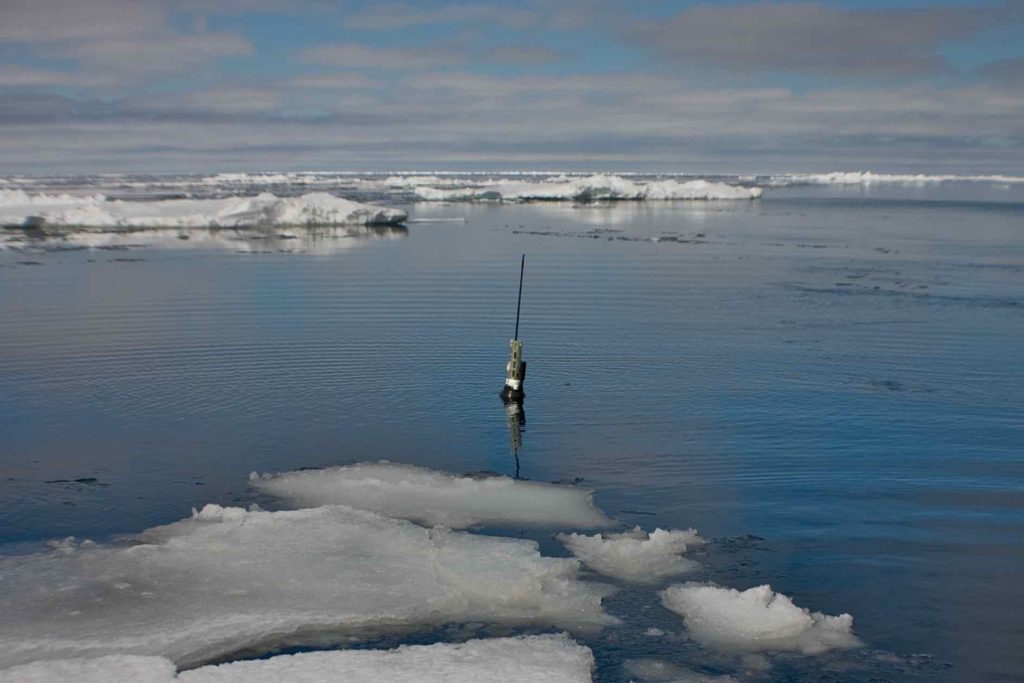New innovations
Scientists and engineers on the WHOI Argo team are constantly working to improve the quality, quantity, and diversity of data collected by Argo floats, and to lower the "cost per profile" of the Argo program. Two major areas of ongoing innovation are adapting floats to collect data more effectively in ice-covered seas, and increasing the operational lifespan of Argo floats.
Extending float lifespan
In order to achieve the best value for the program, Argo floats need to be marathoners. An Argo float’s battery lifetime is the hard limit of how long it can operate and take profiles, but most floats do not currently last up until the end of their theoretical battery life of ten years. Engineers on the team use several tactics to increase the lifespan of the floats deployed by WHOI, both reducing the cost per profile collected by the Argo program and increasing the total number of observations.
A recent, simple yet effective, tweak was to add one more battery pack to each float, going from two to three. This added power should let the floats collect temperature and salinity data for a longer period of time.
Argo team members also work on adjusting how the floats draw current from their batteries in a way that maximizes battery lifetime. In the ascent and descent phases of the float mission, the hydraulic pump must draw current very quickly in order to move oil between the bladder and the reservoir, which tends to reduce the battery life. The floats now run on a new type of battery, a hybrid of rechargeable/non-rechargeable batteries. The rechargeable batteries are not as negatively affected by bursts of strong current, so when the float has to draw charge quickly, it does so from the rechargeable batteries. Later, when the float is drifting, the non-rechargeable batteries can slowly charge up the rechargeable ones.
Ice detection in the Arctic
 Due to its frigid, harsh conditions and ice cover, the Arctic is the least-well observed part of the ocean. It is also one of the fastest-changing regions as the Earth warms, making technology development to increase Arctic observations a high priority for Argo. The WHOI Argo team is involved in several projects that seek to increase scientific understanding of the Arctic, including Polar Argos and Ice-Tethered Profilers.
Due to its frigid, harsh conditions and ice cover, the Arctic is the least-well observed part of the ocean. It is also one of the fastest-changing regions as the Earth warms, making technology development to increase Arctic observations a high priority for Argo. The WHOI Argo team is involved in several projects that seek to increase scientific understanding of the Arctic, including Polar Argos and Ice-Tethered Profilers.
Polar Argo
In the mid-2000s, WHOI scientists and engineers pioneered an Argo-style float, dubbed the Polar Profiling Float, or 'Polar Argo', designed to take temperature and salinity measurements in ice-covered areas like the Arctic, even in winter. Argo engineers have continued to refine the ice-detection capabilities of Argo floats, as well as other types of floats. Instead of repeatedly trying to surface in an ice-free spot, as did the original versions, newer floats are programmed to descend to collect data for another cycle if they encounter ice at the surface.
Most ice-zone adaptations in modern Argo floats are related to the behavior of the float—they have only slight physical modifications compared to floats placed in other areas of the world. For example, the antenna on top of an Arctic float is protected by a flexible plastic barrier to dampen the impact from hitting ice.
Ice-Tethered Profilers
Since Argo can only operate where ice is seasonal (they need to be able to surface at some point to transmit data), WHOI scientists also deploy Ice-Tethered Profilers. These floats use similar technology to regular Argo floats, but can operate in areas with year-round ice cover as they are attached to the ice rather than free-drifting.
Read more about international efforts to expand Argo's presence in the polar regions.